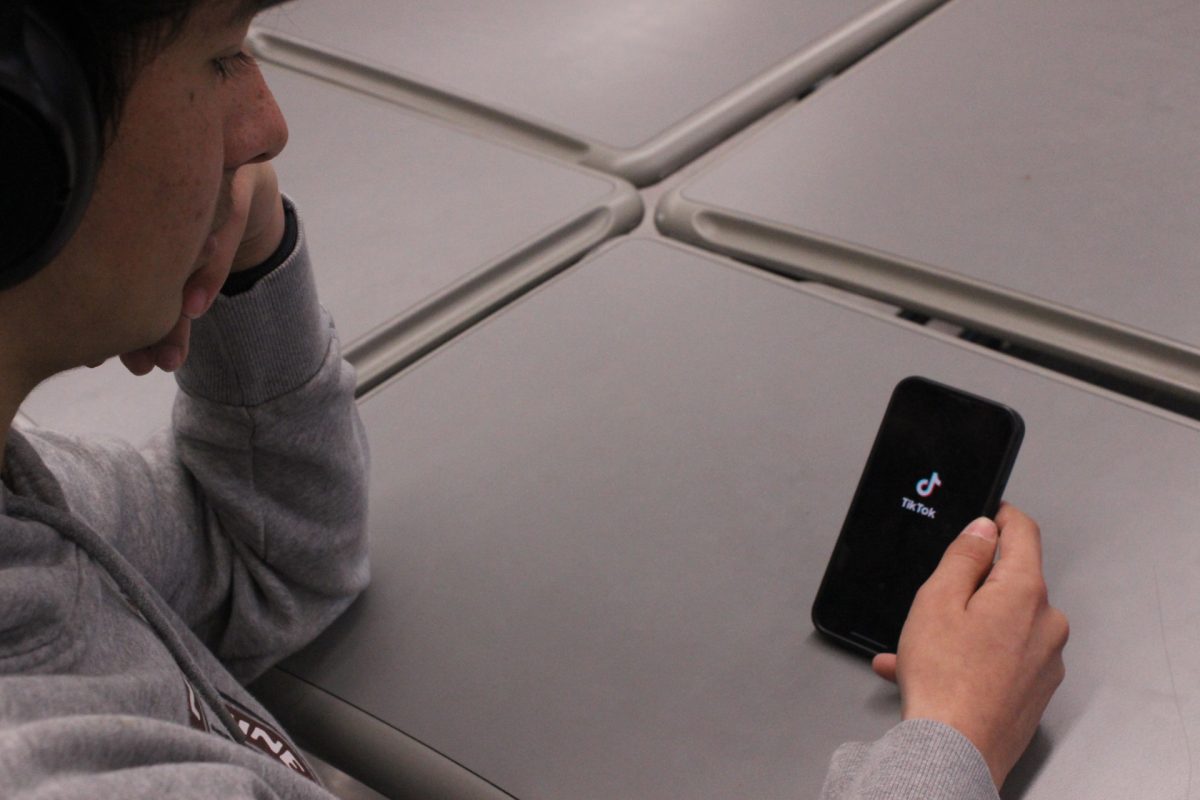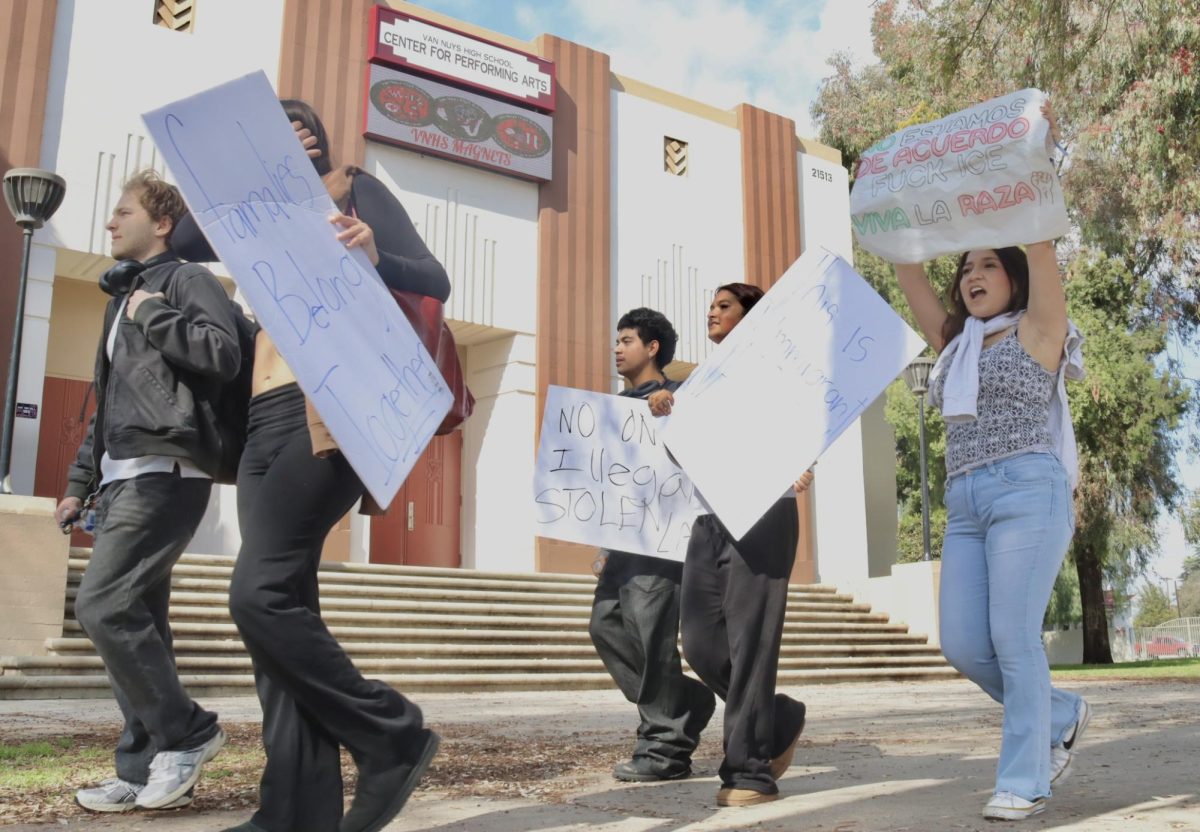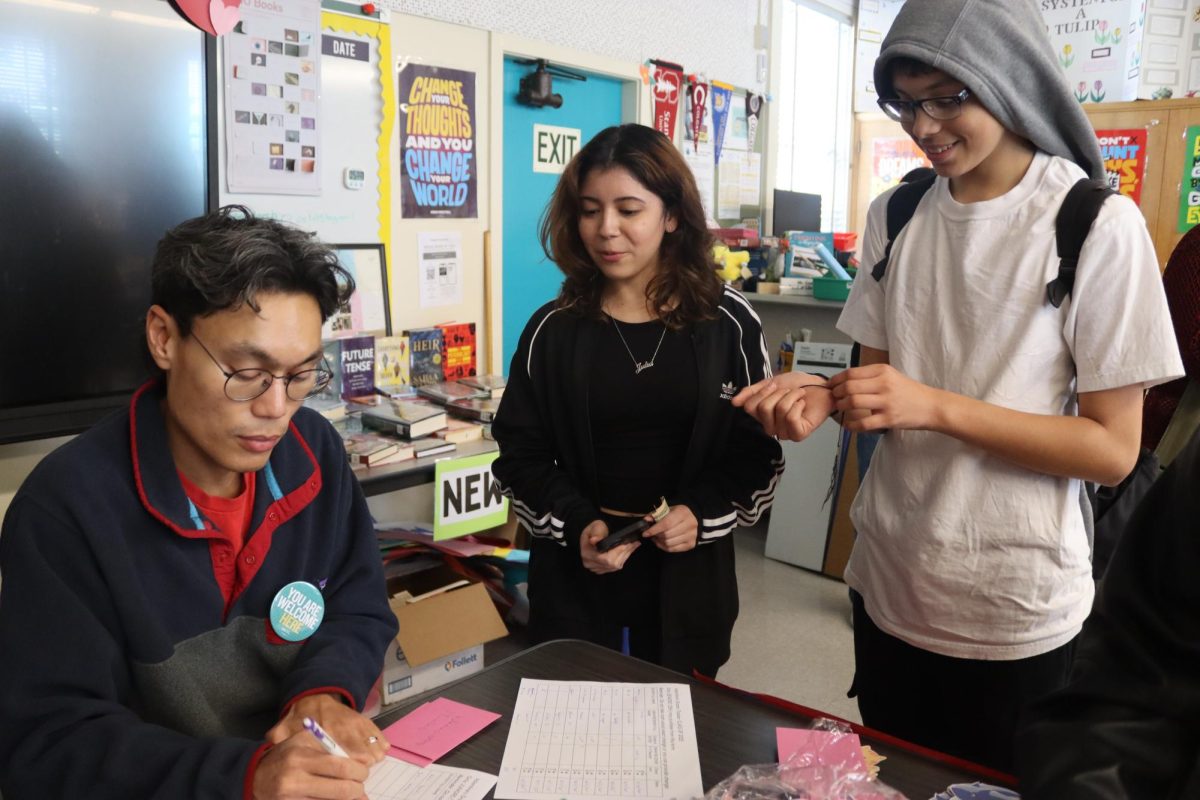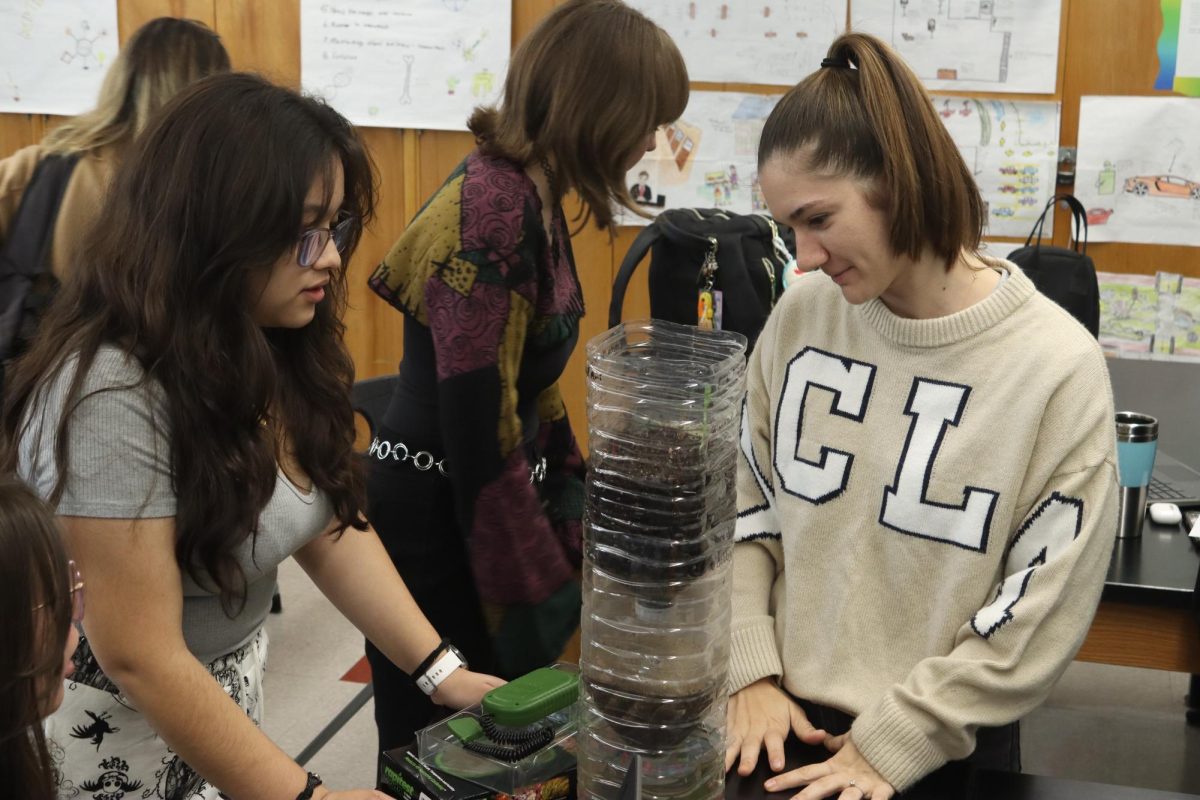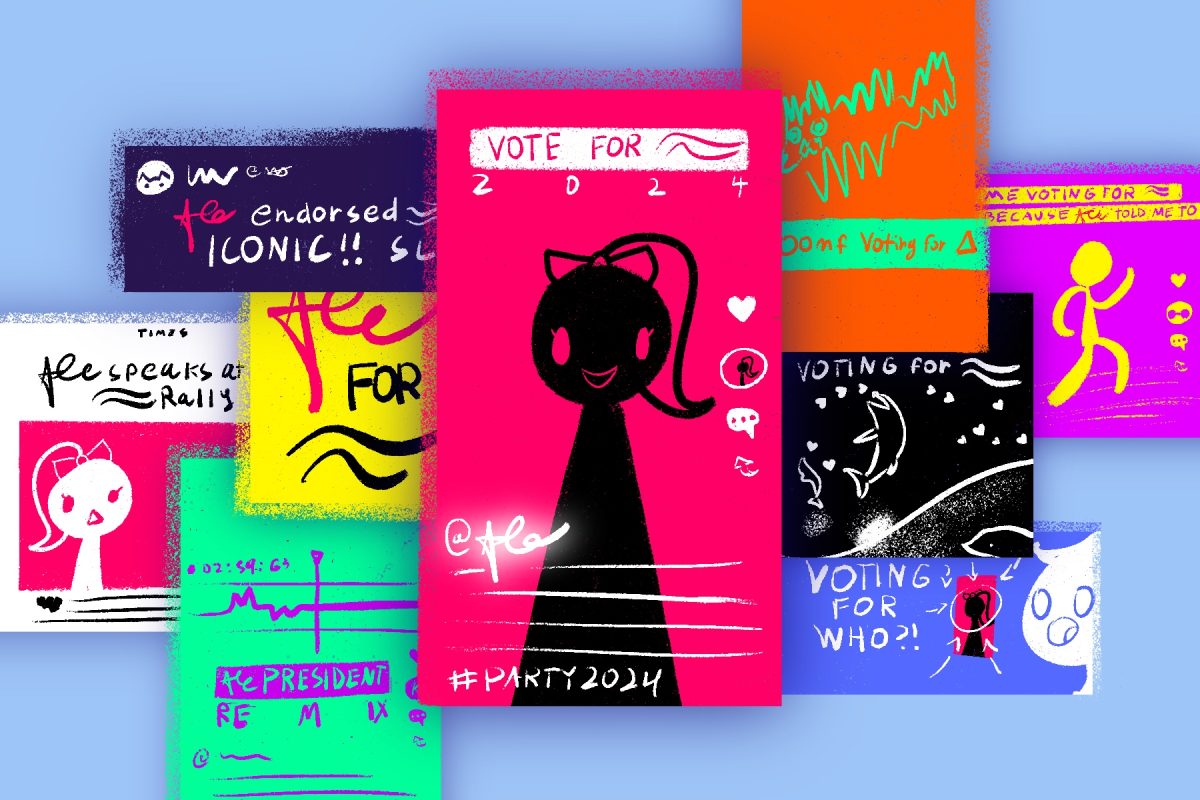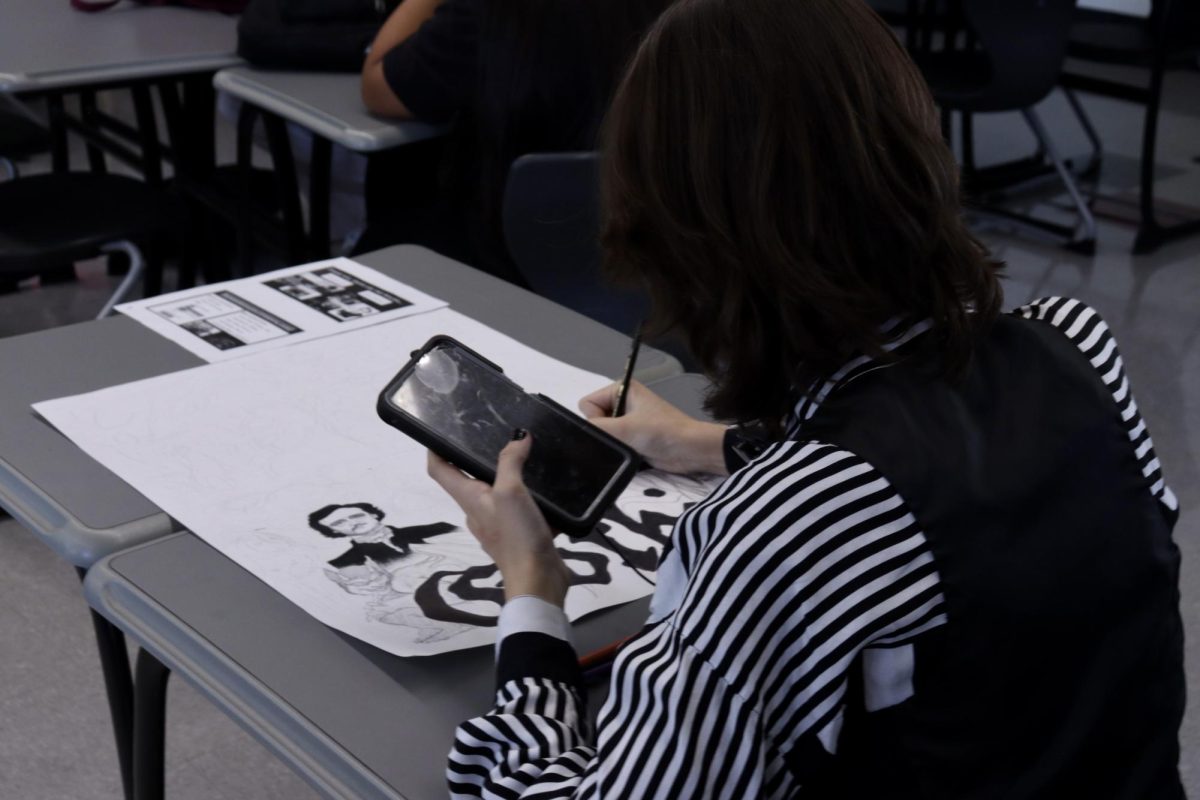While trying to soak up her last few hours of scrolling, freshman Emely Cortez was saddened by the ban of TikTok in the United States (U.S.) on Jan. 18.
“I was trying to soak up all I could before TikTok was gone,” Cortez said. “I got the alert that it was banned and (I) was shocked and sad.”
On Jan. 18, the popular social media app TikTok faced an official ban in the United States, causing the app’s removal from app stores nationwide. Mid-afternoon on Jan. 19, the app was available to users but not in app stores. Those who deleted the app can no longer download TikTok in the U.S. During the last couple of hours before the ban, TikTok sent out an official notice on the app that told users: “We regret that a U.S. law banning TikTok will take effect on January 19 and force us to make our services temporarily unavailable. We’re working to restore our service in the U.S. as soon as possible and we appreciate your support. Please stay tuned!”
TikTok, a popular social media app known for its short-form videos and live streaming, faced retaliation from President Donald Trump in 2020, mainly due to China’s handling of COVID-19. Trump issued an executive order banning American companies from collaborating with ByteDance and subordinate companies like TikTok. In retaliation, the Chinese-owned company TikTok sued the Trump administration. When then-President Joe Biden entered office, he paused legal cases relating to Trump’s proposal to ban TikTok. In 2022, FBI Director Christopher Wray raised concerns about TikTok’s national security. Last March, Biden signed a bill ordering that TikTok be sold to an American company. Bytedance, the company that owns Tiktok refused, the Supreme Court agreed to uphold the ban on Jan. 17 and was enacted on Jan. 18.
When the ban was enacted on Jan. 18, TikTok sent out another important announcement to U.S. users: “A law banning TikTok has been enacted in the U.S. Unfortunately, that means you can’t use TikTok for now. We are fortunate that President Trump has indicated that he will work with us on a solution to reinstate TikTok once he takes office. Please stay tuned!”’
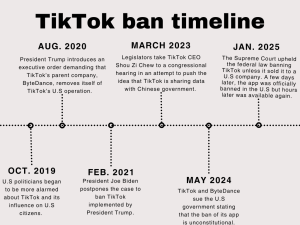
President Donald Trump, who originally proposed the ban of TikTok in August 2020, issued an executive order postponing the TikTok ban’s enforcement for 75 days. This delay aimed to explore alternative solutions addressing national security concerns. One proposal from Trump involved the U.S. obtaining a 50 percent ownership stake in the app to ensure its continued availability.
“I would like the United States to have a 50 percent ownership position in a joint venture. Trump wrote on his social media platform Truth Social. “By doing this, we save TikTok, keep it in good hands, and allow it to stay up.”
Teens gravitate towards TikTok because of the app’s personalization, a wide range of content allows teens to learn about new hobbies and interests linking them to others. For example, people connect through fan edits, their culture and more.
“TikTok can connect me with other people who share the same interests as me,” freshman Brenden Rosenthal said. “I’ve learned a lot on how to get better at guitar on TikTok.”
When the ban was enacted, Americans were cut off from the trends and vogue topics that normally make their way through TikTok. For students like sophomore Hayden Lee, concerns about the loss of self-expression and free speech became worrying.
“I think creative freedoms will be taken,” Lee said. “I think there is freedom to be weird and crazy. People express themselves in different ways and trends, with the app taken we wouldn’t have any of that.”
This situation prompted users to reflect on TikTok’s role in their daily routines. In an Instagram poll conducted by staff writer Jasmine Thompson for this article with 68 student respondents, 53 percent indicated that they do not rely on TikTok in their daily lives, while 43 percent expressed that they do depend on the app for their everyday lives.
“I rely on TikTok in many ways, some being when I need simple and quick answers to questions or when I’m bored and just want to watch TikTok videos,” senior Jennie Lopez said.
A 2022 Pew Research Center study found that 67% of teens use TikTok, with 16% using it constantly. In the study, they analyzed the growth of social media apps like Instagram, YouTube, TikTok and Snapchat. About 54 percent of these teens say it would be challenging to give up social media. The study found that people who use TikTok and Snapchat are consistently on those apps. Students like senior Zion Waddel, who deleted TikTok once it was banned, were excited to understand what life would be like with more free time away from social media.
“ I used to take up all my time on the app,” Waddell said. “Now, I have more freedom because I can do other things in real life and not just scroll on an app for 10 hours.”


